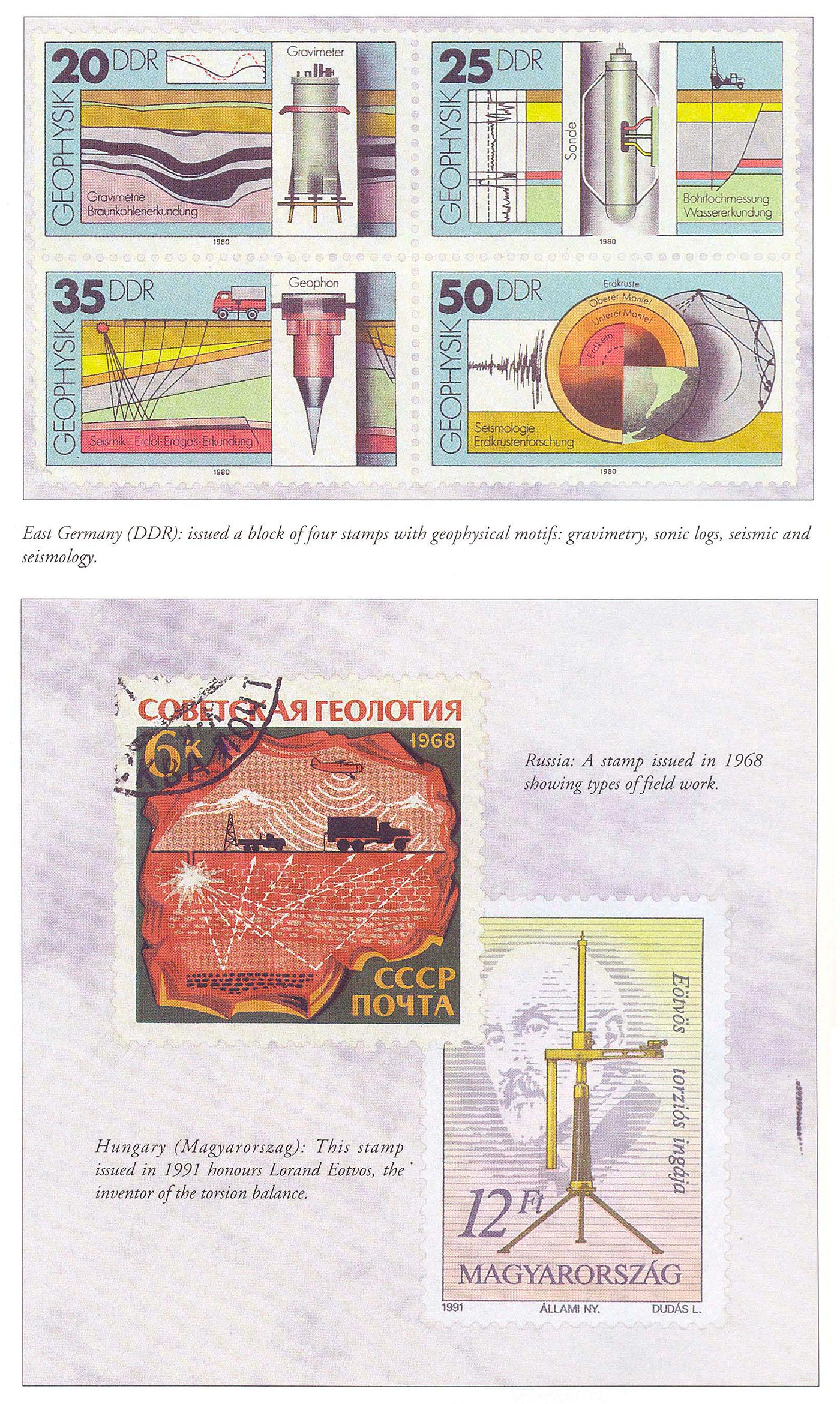Prepaid postage was first issued in England in 1840. Shortly thereafter a young Londoner decided to collect enough cancelled postage stamps to wallpaper her boudoir. The newspaper ad placed to that effect is considered the earliest reference to philately, a “new mania,” as Punch labelled it, soon to gain avid hobbyists in most of Europe and in the United States. Today, of the multitude of items people collect, stamps are by far the most widely sought.
The variety of postage stamps issued allover the world (standard catalogues may list over 200,000 items) require a degree of “specialization” among serious collectors. While some may focus on a particular country or period, many philatelists prefer thematic or topical collections. The emphasis is on design, and themes can be as broad as, for example, wildlife or architecture and as narrow as monarch butterflies or Romanesque monasteries.
Exploration geophysics is one such special area of interest. Actually, it is a subdivision of a general topic which encompasses petroleum related postage stamps. Understandably, this theme doesn’t attract the large following that say flowers or heads of state do, but the Petroleum Philatelic Society International (PPSI) is over 250 members strong, with representatives from 30 countries who correspond and trade stamps regularly.
The examples reproduced here are but a small selection of the international stamps which commemorate geophysical exploration in particular and the various branches of the energy industry in general. A complete catalog, “Petroleum Stamps of the World”, is available from PPSI ($15 postpaid to nonmembers). The organization also publishes a journal, the Petro-Philatelist, four times a year.
More information may be obtained from Brenda Curtis, PPSI Secretary, c/o Halliburton Ltd., B.P. 507, Port Gentil, Gabon.












Join the Conversation
Interested in starting, or contributing to a conversation about an article or issue of the RECORDER? Join our CSEG LinkedIn Group.
Share This Article